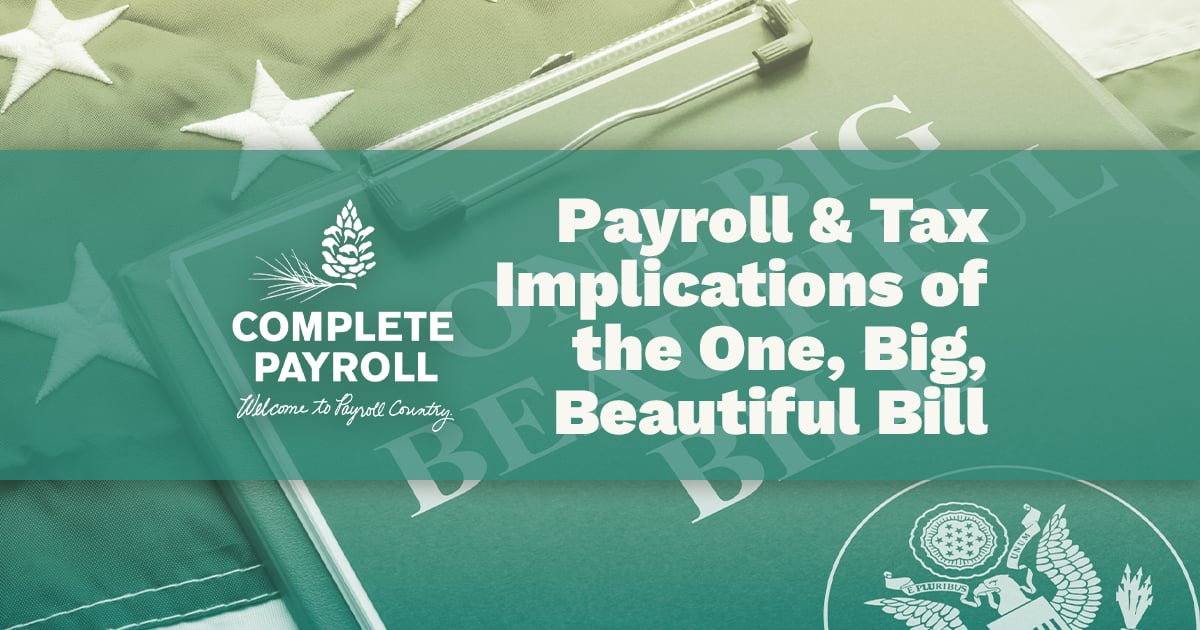When it comes to payroll and paychecks, both can seem complicated at first, and understanding the difference between the terms gross pay and net pay can also be confusing. However, it’s important for both employees and employers to understand the difference between them.
For employees, familiarizing themselves with these terms will help them better negotiate their salaries, create budgets, and sensibly adjust their deductions from their paychecks as need be.
From an employer standpoint, fully familiarizing yourself with these terms and the differences between them will also help you negotiate salaries with employees, in addition to running payroll effectively. It’s important for both employees and employers to fully understand the difference between gross pay and net pay and the impact these numbers have on their paycheck and payroll.
What is Gross Pay vs. Net Pay?
Gross pay and net pay are very different, and unfortunately, these two terms can get easily confused or mixed up if a person doesn’t familiarize themselves with the difference.
What is gross pay? Gross pay is the amount of the employee's earned wages before deductions. Gross pay is the exact amount of their salary or hourly wage. If an employee makes $50,000 per year, then $50,000 is their gross pay.
Net pay is the amount that an employee takes home after taxes and deductions from their gross pay. This is the amount that is deposited into an employee’s checking account. For example, net pay would be the amount received after taxes and deductions are taken from their gross pay of $50,000.
Both terms will appear on a pay stub. Employees should know how to understand both numbers and how they affect their paycheck, and employers should be familiar with these two concepts to ensure they accurately calculate an employee's wages.
How to Calculate Gross Pay
The process and formula for calculating gross pay for employee wages depend on whether the employee receives a salary or hourly wages.
Calculating Gross Pay for Hourly Employees
To calculate the gross pay of an hourly employee, simply multiply their hourly wage by the number of hours they worked during the specific pay period.
For example, if an employee makes $25 per hour and works 40 hours a week, their weekly gross pay is $1,000. If an employee is paid biweekly, then it would be calculated as $25 x 80 hours worked. This means their gross biweekly paycheck would be $2,000.
Keep in mind that if an employee has worked overtime, their overtime hourly rate has to be calculated separately. Employers will need to calculate an employee's overtime by multiplying their special overtime rate by the number of overtime hours worked. This will be added to the employee’s gross pay.
Calculating Gross Pay for Salaried Employees
Calculating gross pay for employees who earn a salary is different from hourly employee calculations. To calculate the gross pay for a salary, you’ll need to first determine the number of pay periods you have throughout the year. A pay period is the time frame that you’re paying your employee for, such as weekly, biweekly, or monthly pay periods.
For example, if an employee makes $78,000 annually and the company has 26 biweekly pay periods, then the calculation to determine their gross pay per paycheck would be: $78,000 ÷ 26 pay periods = $3,000 biweekly gross pay.
How to Calculate Net Pay
The first step in calculating net pay is determining the gross pay. Once you have that number, take out all of the employee’s deductions from it, such as taxes and other contributions. Net pay is what is left of gross pay minus all of the employee’s deductions. Employers pay their employees gross pay, but employees take home net pay.
There are two types of deductions: involuntary and voluntary. Involuntary deductions are mandatory deductions every employee has, such as taxes. Voluntary holdings are deductions that an employee specifically asked to withhold, such as healthcare insurance and retirement holdings.
When determining how to calculate net pay, employers and HR professionals typically follow these basic steps:
- Calculate Gross Pay. Employers can calculate gross pay using the hourly rate multiplied by the total hours worked or the salary divided by the number of pay periods.
- Pretax Voluntary Deductions. Contributions to 401(k)s, health insurance premiums, and other voluntary withholdings are among these deductions.
- Deduct Witholdings. Withhold Taxes. FICA, state, and local taxes must also be withheld by employers in addition to the federal income tax.
- Post-Tax Deductions. Charitable contributions, post-tax premiums (life insurance, etc.), uniform deductions, wage garnishments, etc.
Once these withholdings are properly withheld from an employee’s gross pay, the leftover amount is the net pay.
Payroll Deductions Explained: From Gross to Net Pay
Employers are responsible for subtracting the deductions from an employee’s paycheck before releasing the employee’s net pay into their bank account.
Payroll taxes are the most common form of deduction. With each pay period, we have a portion of our gross pay deducted for various tax obligations. Income taxes are withheld from every paycheck, and this includes federal, state, and local government taxes.
Types of Income Taxes
Federal Income Taxes
This is the amount of money you pay to the federal government based on your wages. When an employee fills out a W4 form upon hiring with a company, they dictate how much of their paycheck they would like held for federal income tax purposes.
State Income Taxes
This is the money you pay to your state government based on your wages, with the amount varying from state to state. Business owners and HR professionals will be up-to-date on their state’s income tax, and employees should be informed of this amount as well to better understand their paycheck.
City and Local Taxes
These types of taxes are more rare, as there are only certain counties, cities, or school districts that impose income taxes. If you live in one of these areas, these taxes will be deducted from your paycheck along with federal and state taxes.
FICA Taxes
FICA stands for the Federal Insurance Contributions Act. These taxes are the amounts withheld for Social Security and Medicare. Unlike other income taxes, FICA taxes are split between the employee and the employer, with employers required to match employees' contributions.
The Impact of Not Knowing Your Pay Details
If a business owner or HR professional is new to the field of payroll, it’s crucial that they understand and learn the difference between gross pay vs. net pay so they can accurately calculate employees’ wages. Employers also need to be up-to-date on income, state, and local tax rates, as inaccurate withholding tax rates can cause problems.
It is essential for employees to understand their paychecks so that they can adjust their budget or withholdings as necessary, as well as be informed about their finances. This also helps with negotiating wages and deciding voluntary withholding amounts.
Conclusion
Again, gross pay is the total amount of money an employee earns before any deductions and withholdings. This is an employee's salary, or hourly rate. Net pay is the amount that an employee takes home on their paycheck after an employer has deducted the necessary income taxes and other withholdings.
It’s important for both employees and employers to have a deep understanding of gross pay and net pay and how their paychecks are affected by them. With these payroll deductions explained, hopefully this will empower you with the knowledge to better manage your personal finances or business payroll.
Are you looking for more personalized guidance on managing your payroll efficiently? Contact our payroll experts today for professional guidance!

















 Get Instant Blog Notifications
Get Instant Blog Notifications


